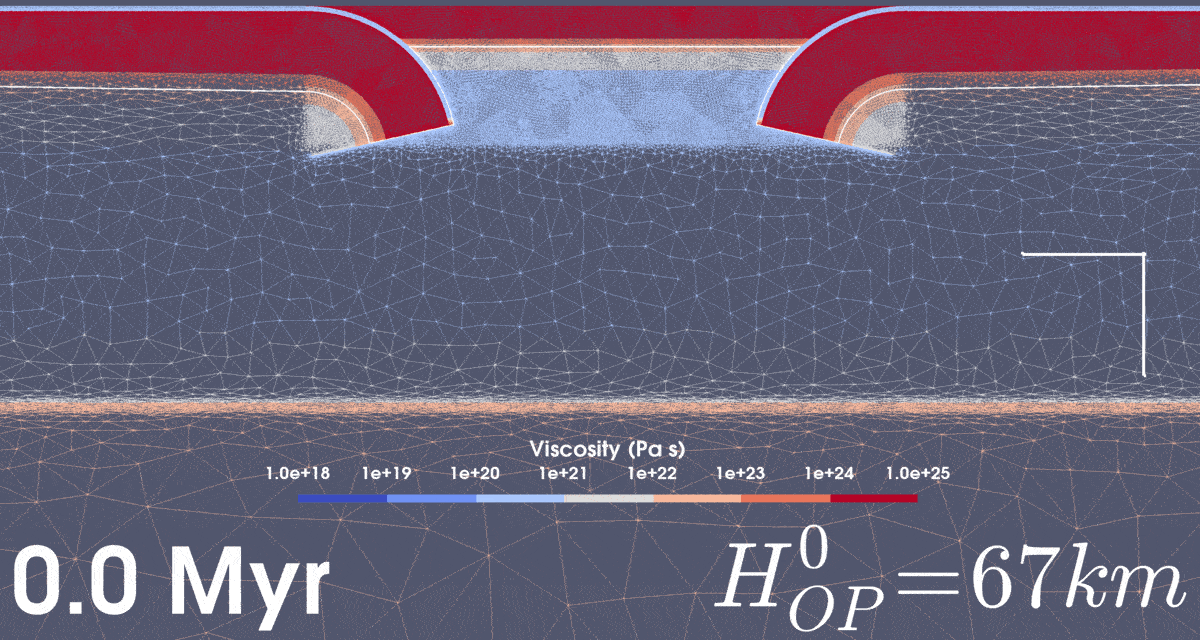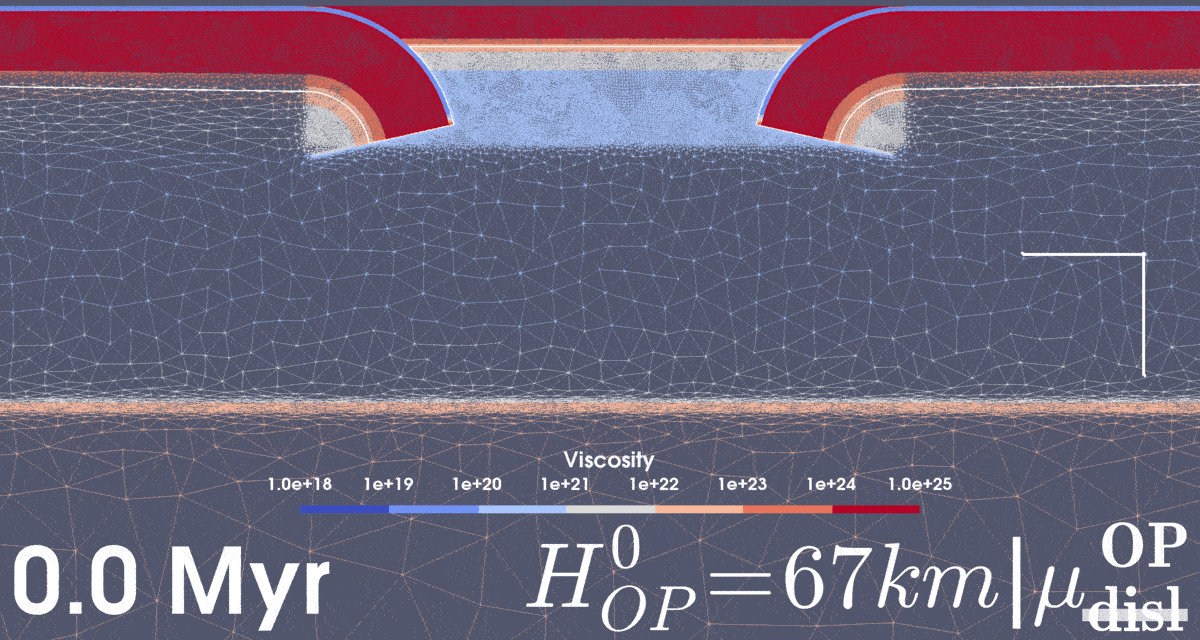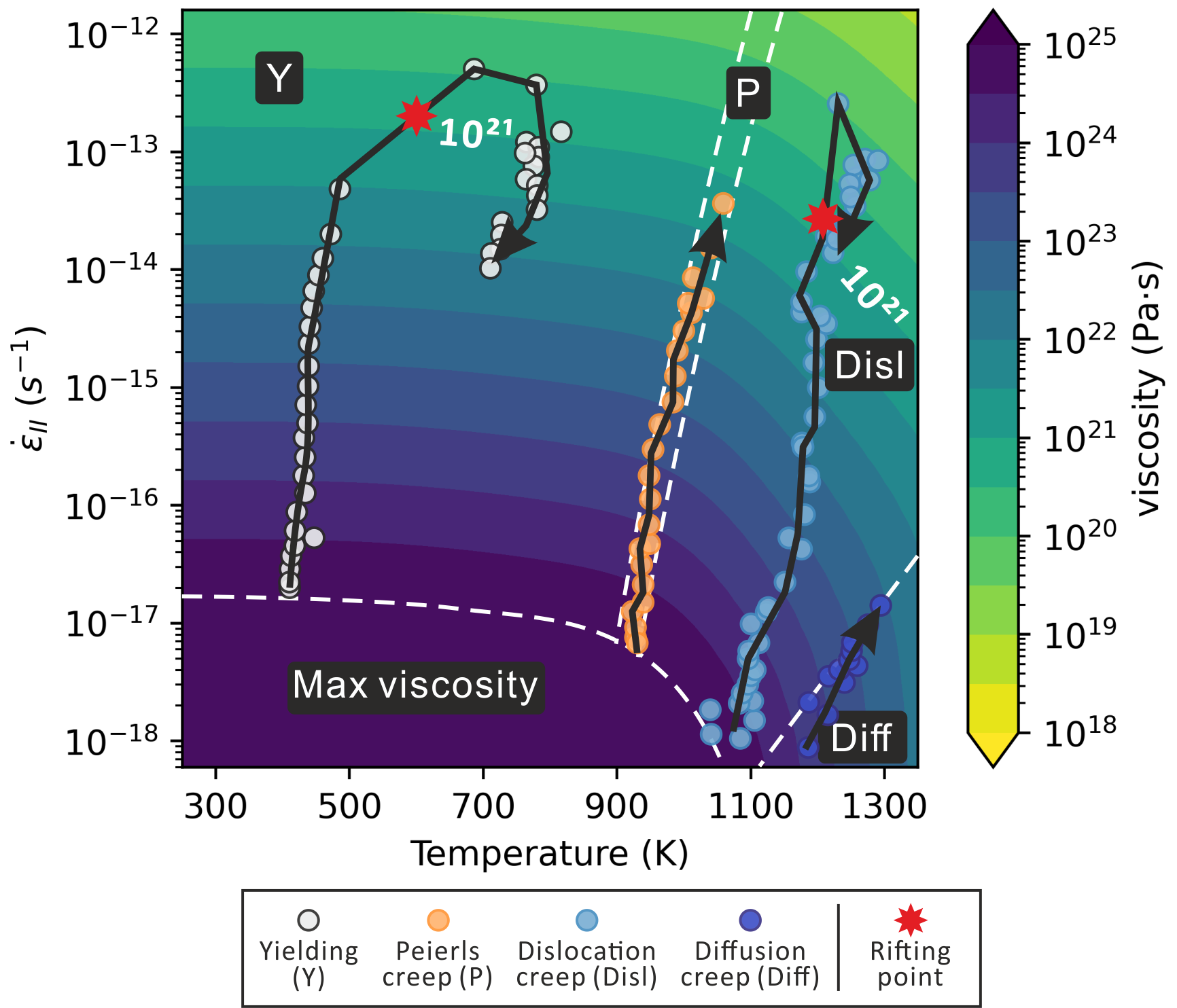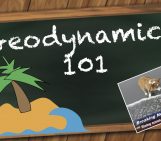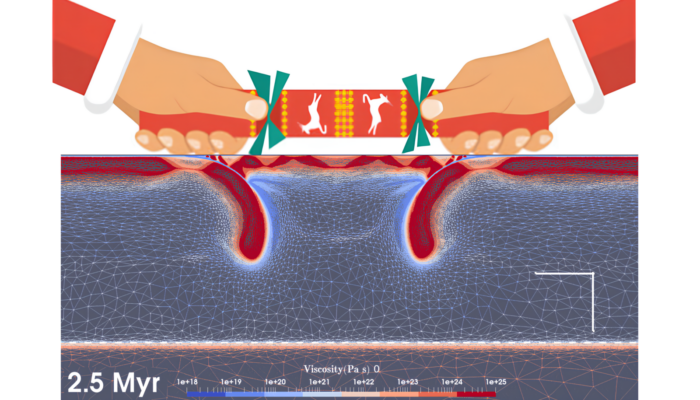
A recent research finds that dual inward dipping subduction framework, after considering thermal dependent deformation mechanisms, can pull apart the middle overriding plate (Lei and Davies, 2023), just like pulling Christmas crackers from both ends!
Dual inward dipping subduction (DIDS) occurs when the overriding plate is decoupled with two subducting slabs dipping towards each other. DIDS is found in the Caribbean Sea, Southeast Asia under the current tectonic framework, and it is commonly observed in the supercontinent reconstruction, e.g., the North China Craton since Early Paleozoic to Tertiary (Santosh, 2010; Windley et al., 2010) etc. It is unclear though what role DIDS may play in deforming the overriding plate relative to single sided subduction.
Simulation of DIDS is a young research topic. Previous DIDS models show that the subducting slabs can generate a variety of upper mantle flow patterns which regulate the stress state and topography of the overriding plate (Dasgupta and Mandal, 2018; Holt et al., 2017; Lyu et al., 2019). However, these pioneering works all applied a constant viscosity or Newtonian rheology that excludes temperature dependency for both plates and convective mantle flow during the simulation. As a result, it would not be possible to capture the role thermal weakening plays in deforming the overriding plate, especially in its hot bottom region.
In a recent paper, researchers from Cardiff University run a series of 2-D thermo-mechanical models, incorporating temperature dependent rheology laws, to investigate how dual inward dipping subduction may differ from single sided subduction and previous DIDS models in deforming the overriding plate. Also, quantitative analysis has been conducted to understand different deformation mechanisms’ contribution to induce progressive weakening in the overriding plate. The research is likely to improve the understanding of both existing and extinct DIDS framework.
DIDS’ role in deforming the overriding plate
Relative to single sided subduction (SSS), DIDS tends to weaken the overriding plate in a greater degree, and it is more likely to form plate thinning, breakup or generate a spreading oceanic floor (new plate boundary). This is because DIDS can self-consistently form a fixed boundary condition for the overriding plate, thus promoting the development of strain localisation during subduction. It would be as if pulling the middle overriding plate from both sides as slab sinks in the upper mantle. Yes, just like pulling Christmas crackers!
Besides, DIDS can generate stronger upwelling mantle flow which is capable of progressively reducing the viscosity of the overriding plate after considering thermal dependent deformation mechanisms for the plate rheology (e.g., Figure 1). These DIDS effects are helpful to improve understanding the deformation patterns in the existing and extinct DIDS system.
Figure 1. Animation of DIDS models with different rheology (based on Lei and Davies, 2023). (Left) Considering dislocation creep. (Right) Not considering dislocation creep.
Deformation mechanisms’ role in deforming the overriding plate
After considering thermal dependent rheology laws, i.e., Peierls creep, dislocation creep and diffusion creep, the upwelling mantle wedge flow induced by DIDS can promote continuous viscosity reduction in the overriding plate, while keeping the plate thickness and thermal structure unchanged. Once the magnitude of viscosity goes below a critical value (around 1e21-1e22 Pa s), strain starts to localize, promoting plate thinning, breakup or even forming a new spreading ridge and oceanic floor. During the progressive weakening process, the mechanism of positive feedback may have played an important role in necking the overriding plate. That is, when plate becomes weaker, the strain rate increases which will lead to further viscosity reduction.
The research also tries to quantify each deformation mechanism’s contribution to the progressive weakening, represented by the viscosity reduction process (Figure 2). This method along with other efforts we proposed to understand the plate weakening is likely to help understand other processes that involves plate weakening, especially formation of new plate boundaries, e.g., continental breakup, subduction initiation, opening of marginal oceanic floor and intraplate volcanism etc.
Figure 2. Evaluation of different deformation mechanisms’ contribution to viscosity reduction developed in the overriding plate (Lei and Davies, 2023).
References
Dasgupta, R., Mandal, N., 2018. Surface topography of the overriding plates in bi-vergent subduction systems: A mechanical model. Tectonophysics 746, 280–295. https://doi.org/10.1016/j.tecto.2017.08.008
Holt, A.F., Royden, L.H., Becker, T.W., 2017. The Dynamics of Double Slab Subduction. Geophys. J. Int. 209, ggw496. https://doi.org/10.1093/gji/ggw496
Lei, Z., Davies, J.H., 2023. Progressive weakening within the overriding plate during dual inward dipping subduction. Tectonophysics 863, 230004. https://doi.org/10.1016/j.tecto.2023.230004
Lyu, T., Zhu, Z., Wu, B., 2019. Subducting slab morphology and mantle transition zone upwelling in double-slab subduction models with inward-dipping directions. Geophys. J. Int. 218, 2089–2105. https://doi.org/10.1093/gji/ggz268
Santosh, M., 2010. Assembling North China Craton within the Columbia supercontinent: The role of double-sided subduction. Precambrian Res. 178, 149–167. https://doi.org/10.1016/j.precamres.2010.02.003
Windley, B.F., Maruyama, S., Xiao, W.J., 2010. Delamination/thinning of sub-continental lithospheric mantle under eastern China: The role of water and multiple subduction. Am. J. Sci. 310, 1250–1293. https://doi.org/10.2475/10.2010.03

